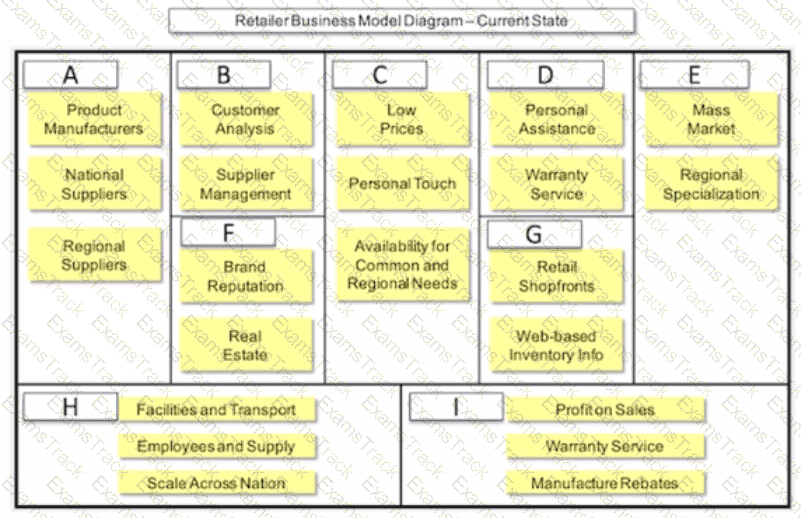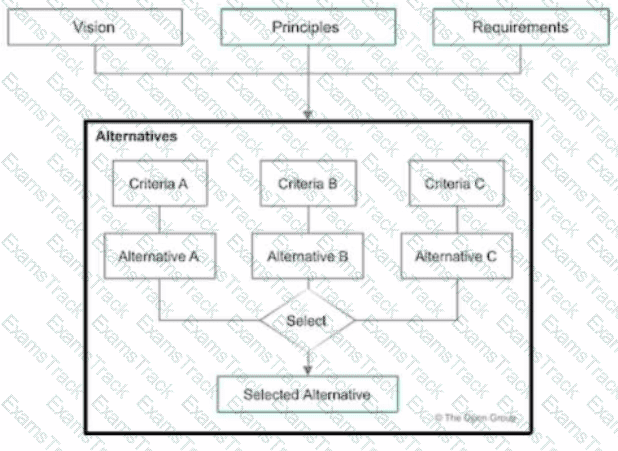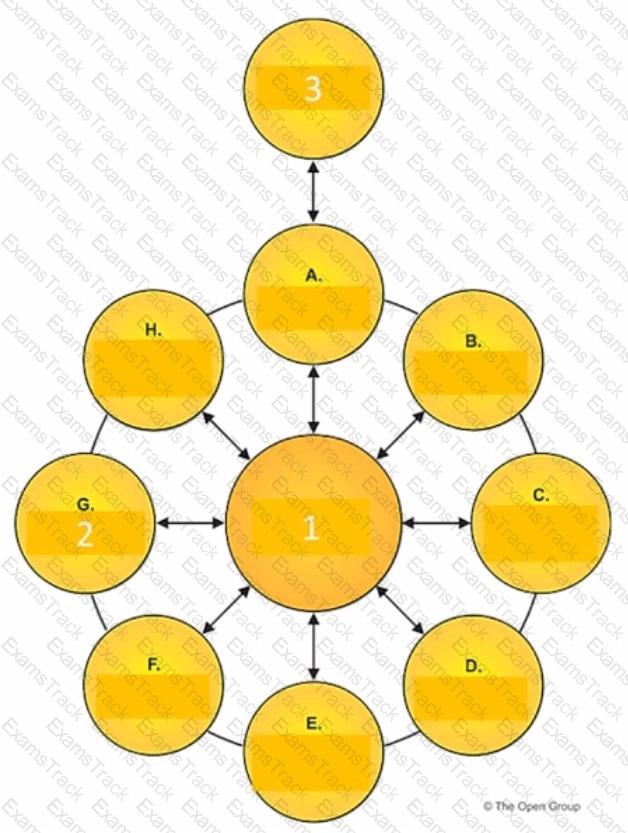In what TOGAF ADM phase is the organization map linked built out with the detail and relationships to overviews in order to understand the needs of the organization?
Consider the following extract of a model showing relationships between Business Architecture concepts:
What is the relationship labeled X?
Consider the following example using the Business Model Canvas:

What are the segments labeled A, D and I?
Consider the following chart:
Which important concept for Enterprise Architecture Practitioners does it illustrate?
What is the relationship labeled Y?
What is defined as the effect of uncertainty on objectives?
What process is used to decompose a set of business capabilities to communicate more detail?
Consider the following graphic from the TOGAF Standard:

Why is this method used?
Exhibit.

Consider the diagram of an architecture development cycle.
Select the correct phase names corresponding to the labels 1, 2 and 3?
Which statement best describes iteration and the ADM?
|
PDF + Testing Engine
|
|---|
|
$49.5 |
|
Testing Engine
|
|---|
|
$37.5 |
|
PDF (Q&A)
|
|---|
|
$31.5 |
The Open Group Free Exams |
|---|

|